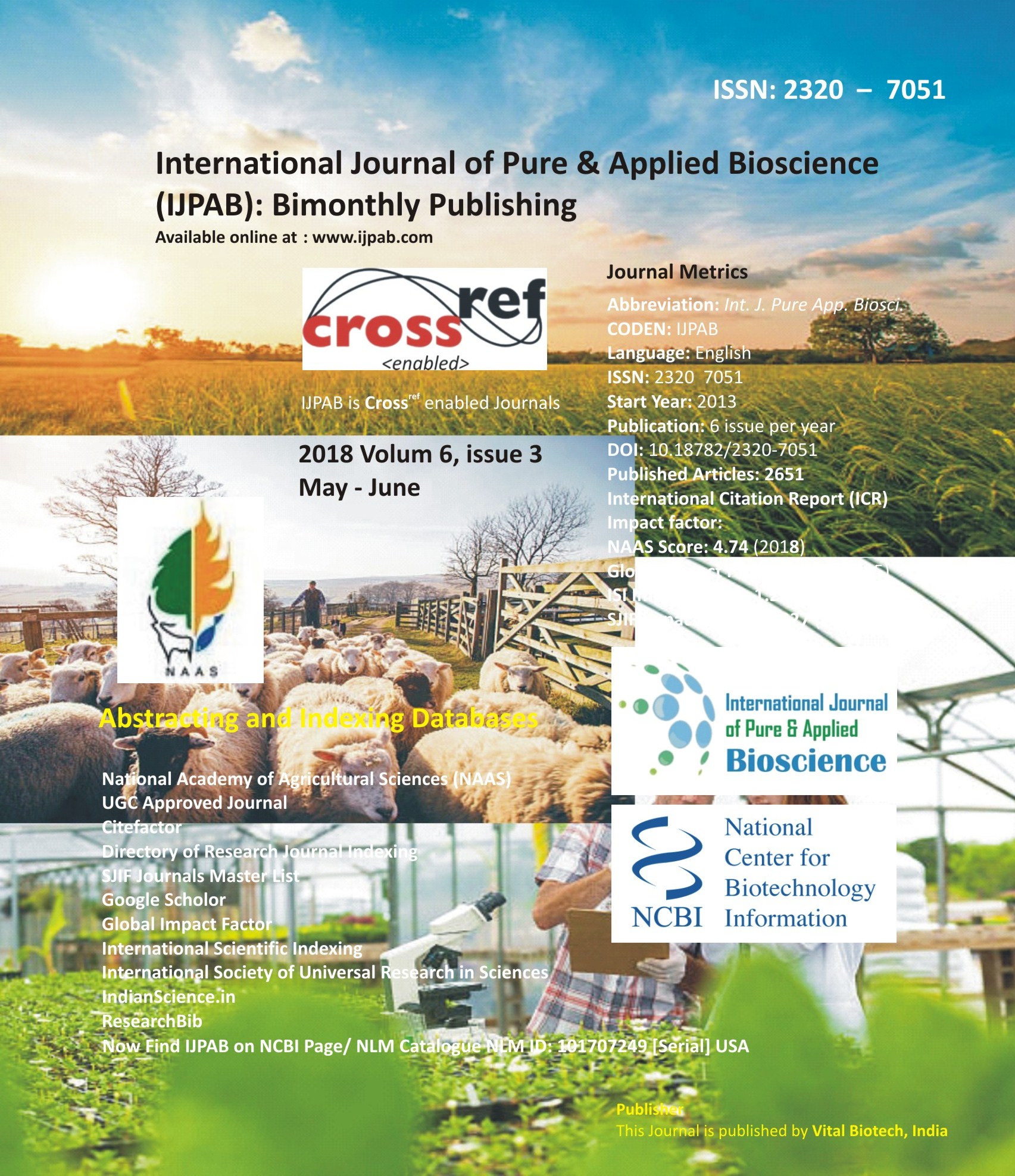
-
No. 772, Basant Vihar, Kota
Rajasthan-324009 India
-
Call Us On
+91 9784677044
-
Mail Us @
editor@ijpab.com
International Journal of Pure & Applied Bioscience (IJPAB)
Year : 2018, Volume : 6, Issue : 3
First page : (374) Last page : (381)
Article doi: : http://dx.doi.org/10.18782/2320-7051.6691
Canopy Temperature Depression and Stay Green: Major Components for Identifying Under Terminal Heat Stress Resistance Genotypes in Wheat
Krishna Kumar Jangid* and Jai Prakash Srivastava
Department of Plant Physiology, Banaras Hindu University, Varanasi, India 221005
*Corresponding author email: krishnajangid311@gmail.com
*Corresponding Author E-mail: krishnajangid311@gmail.com
Received: 27.07.2018 | Revised: 24.06.2018 | Accepted: 29.06.2018
ABSTRACT
Analysis of yielding ability in 20 genotypes of spring wheat (Triticum aestivum) was done on the basis of morpho-physiological parameter including canopy temperature and stay green trait under terminal heat stress. Effect of terminal heat stress was studied by delayed sowing at three different dates viz., normal (S1; November 26, 2011), late (S2; December 25, 2011) and very late (S3; January 10, 2012) taking 20 genotypes of wheat in randomized block design with three replications. Genotypes showed significant differences in their morpho-physiological traits under different environments. At anthesis stage, chlorophyll content in flag leaf decreased in plant of S2 and S3 as compare to S1. Canopy temperature increased with advancement in plant growth as well as with delay in sowing. There was significant reduction in total dry matter production, spike number per unit area, spike lets per spike, grains per spike and 1000 grain weight (test weight) with delay in sowing. On the basis of susceptibility index and relative yield loss, genotypic NW-1014 was found to be the most resistant and genotype K-911 the most susceptible to terminal heat stress. NW-1014 was a poor yielder under normal sown condition (S1) but yielded highest under S3, while K-911 yielded highest under S1 but was poor yielder when sowing was delayed (S3) among the evaluated genotypes.
Key words: Chlorophyll content (CC), Canopy temperature (CT), Canopy temperature depression (CTD), Terminal heat stress.
Full Text : PDF; Journal doi : http://dx.doi.org/10.18782
Cite this article: Jangid, K.K. and Srivastava, J.P., Canopy Temperature Depression and Stay Green: Major Components for Identifying under Terminal Heat Stress Resistance Genotypes in Wheat, Int. J. Pure App. Biosci.6(3): 374-381 (2018). doi: http://dx.doi.org/10.18782/2320-7051.6691

